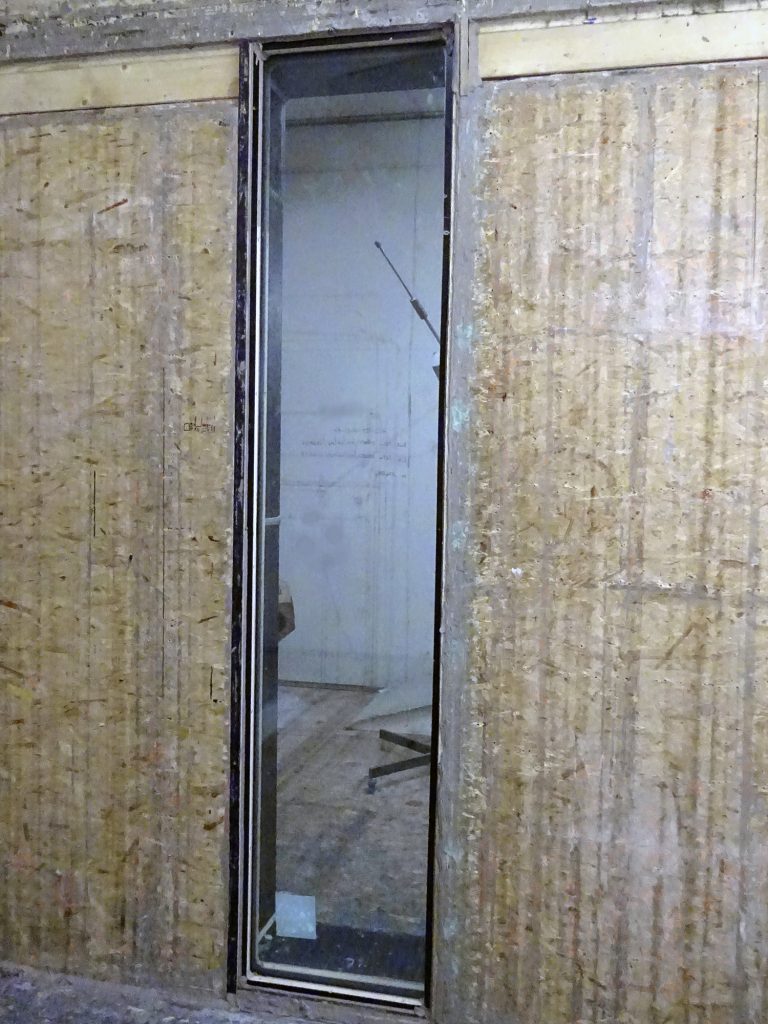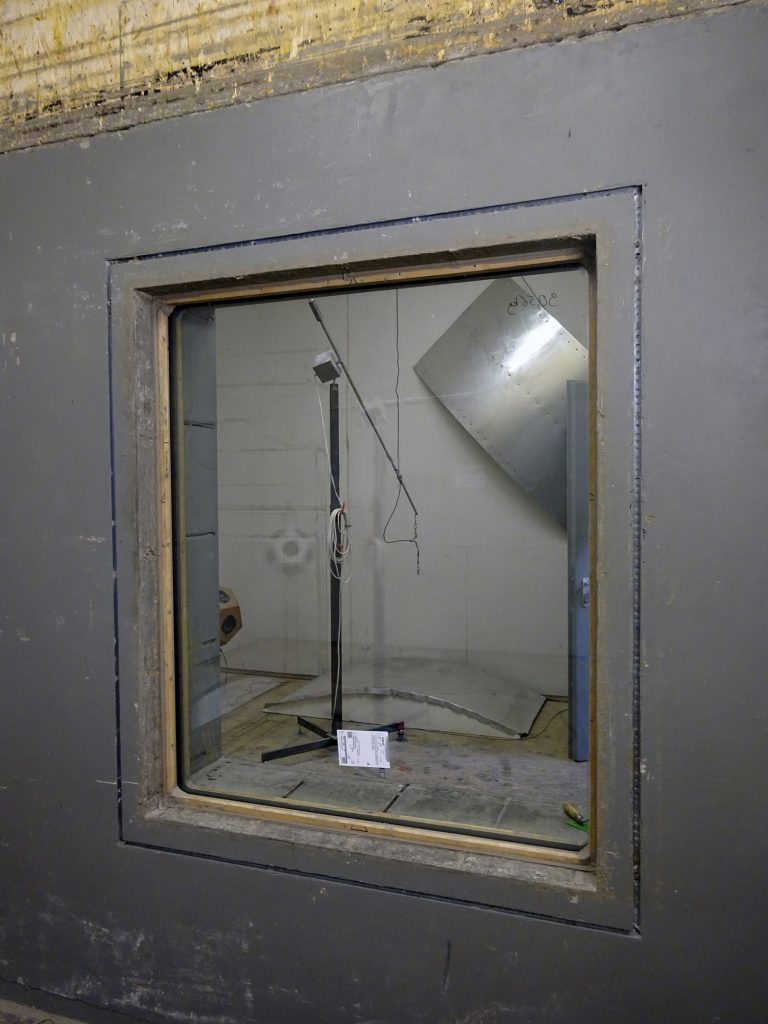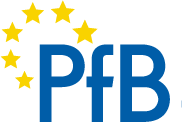Sound testing of special sizes
Narrow soundproof glazing in façade construction
Airborne sound insulation of insulating glazing
The sound insulation of glazing is tested in the laboratory in accordance with DIN EN ISO 10140-2. As part of the test, the sound insulation values R are determined for one-third octave bands in the frequency range 50 Hz to 5000 Hz. As a result of the test, the weighted sound reduction index Rw is calculated in accordance with DIN EN ISO 717-1. For this purpose, the individual sound attenuation values from 100 Hz to 3150 Hz are evaluated using a reference curve. The sound reduction index Rw is specified as a single value in decibels (dB). In order to make this highly simplified single-number value more manageable for different noise ranges, the spectrum adjustment values C and Ctr were introduced, which can represent different applications. They are presented in the form Rw (C;Ctr).
Glazing tests in the laboratory are generally carried out in a standardised format of 1.23 m x 1.48 m (aspect ratio approx. 1.2). This makes it possible to compare different types of glazing. DIN EN 14351-1 specifies extrapolation rules for determining the sound insulation of windows. These rules make it possible to change the areas of tested windows using correction values. However, changes to the aspect ratios are not taken into account here.
Problems with deviating sizes
In façade construction in particular, glazing with a significantly higher aspect ratio than the standard format is often used. The PfB’s testing experience shows significant losses in sound insulation here. Highly sound-insulating glazing with laminated safety glass panes is particularly affected.
Unfortunately, there is currently no standardised tool for reliably estimating correction values for a large number of glass formats.
In preparation for a sound insulation test for building projects with specified sound insulation values to be achieved, the façade builder is now faced with a dilemma. The aim is usually to select a glazing with which the façade element achieves the specified sound insulation, but at the same time is not oversized in order to minimise costs and thus remain competitive.
One option is to provide a very large selection of glazing for testing and to test it one after the other in combination with the element. The disadvantage of this method, however, is that it requires a great deal of time, logistics and costs, which can also jeopardise deadlines.
A second option is to “play it safe” and use a small selection of particularly high-performance glazing. However, this runs the risk of using a product that is far too expensive. Through customised testing, PfB customers have been able to reduce their glazing costs by up to 50 % in some cases. In addition, there is still no guarantee that the selected glazing will provide sufficient sound insulation. In the worst case, a retest is then necessary, which again represents a considerable expense.
The following example from PfB testing experience is intended to give an idea of the deviations that can occur:
The requirement for the airborne sound insulation of the tested façade element was Rw = 47 dB. The dimensions of the triple insulating glazing (W x H) were approx. 0.48 m x 2.88 m and thus had an aspect ratio of 6. The sound insulation of the glazing in standard format was specified as Rw = 50 dB.
In order to determine the real sound insulation of the glazing, it was tested as an individual part. A result of Rw = 43 dB was achieved. This corresponds to a difference of 7 dB to the manufacturer’s specification.
Conclusion
To avoid such problems, the PfB recommends carrying out tests on glazing in advance to determine the actual sound insulation. This creates a knowledge advantage that greatly simplifies all planning and testing steps. This also means that fewer uncertainties have to be factored in when calculating the quotation.
PfB’s flexible test benches allow all desired formats to be tested quickly and easily. Questions regarding the selection of test specimens and possible test programmes can be clarified with PfB in advance.


